Family : Orchidaceae

Text © Prof. Pietro Pavone

English translation by Mario Beltramini
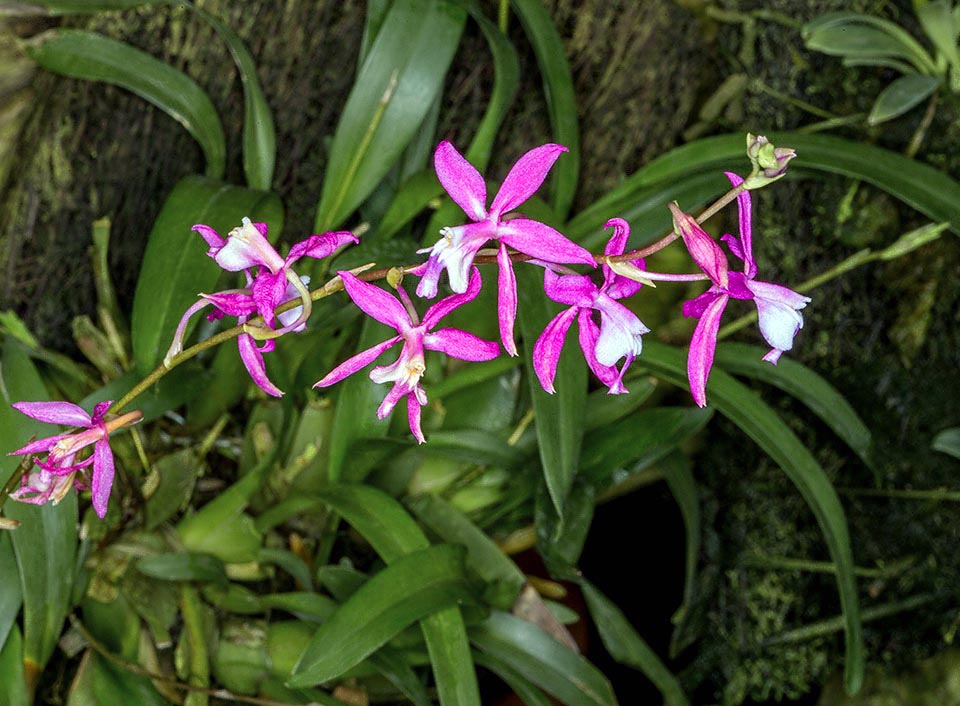
Oncidium vulcanicum is a lithophyte or cespitose epiphyte native to Bolivia, Colombia, Ecuador and Peru at altitudes between 1800 and 3000 m © Giuseppe Mazza
Oncidium vulcanicum (Rchb.f.) M.W.Chase & N.H.Williams is a species of the family Orchidaceae, subfamily Epidendroideae, tribe Cymbidieae, subtribe Oncidiinae.
It is native to Bolivia, Colombia, Ecuador and Peru and it is found at altitudes between 1800 and 3000 metres on the rocky walls of gorges as epiphyte, in the humid rainforest up on the branches. It was found for the first time in 1872 in Ecuador at an altitude of 3050-3350 m, on the slopes of the volcano Tungurahua (5023 m), that is one of the most active volcanoes present in the Ecuadorian territory.
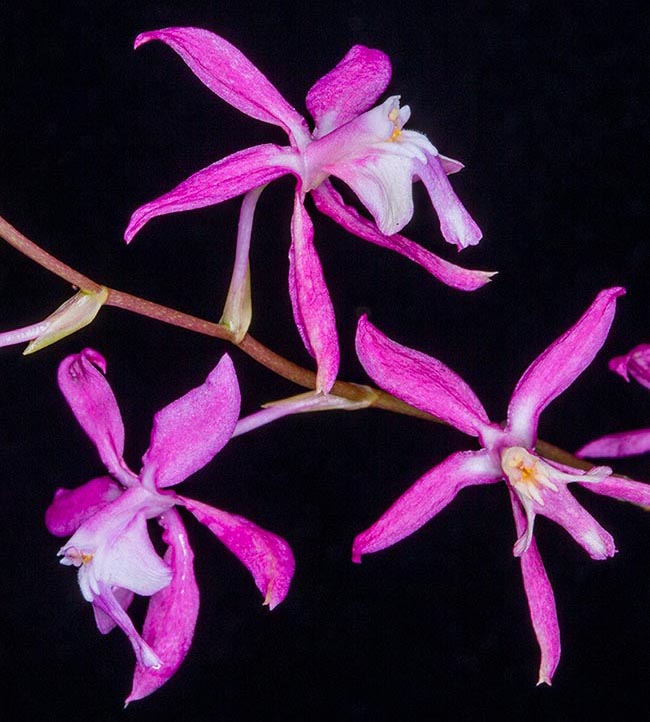
It’s a plant that may be 15-20 cm tall with showy flowers pollinated by hummingbirds © Giuseppe Mazza
Its name, in the quechua language, means “burning throat” or “throat of fire”.
It has been also found at lower altitudes, at Baños de Agua Santa at 1800 m of altitude, in the Province of Napo at 2050 m and in the Province of Pichincha at 2000-2500 m.
In Peru it grows in the very humid mountain forests from 2100 to 2300 m of altitude, usually on the exposed branches.
This species was described, initially, in The Gardeners’ Chronicle & Agricultural Gazette 393 (1872) by Heinrich Gustav Reichenbach (1823-1889) under the name of Mesospinidium vulcanicum.
Later on, other Authors have transferred it into the genera Cochlioda and Odontoglossum, nowadays no longer valid for this species.
It has been included, based on molecular evidence, in the genus Oncidium Sw. da M.W. Chase & N.H. Williams (Lindleyana 21-3: 27, 2008).
This genus, described for the first time in 1800 by Olof Peter Swartz (1760-1816), counts more than 330 species of orchids that presently are distributed throughout most of South America, of Central America, Mexico and West Indies, reaching on the Andes a remarkable morphological diversity.
The name of the genus comes from the Greek word ὀγκος, ‘onkos’ meaning “swelling” because of the presence of a small flesh outgrowth at the base of the labellum (callus).
The epithet vulcanicum indicates that the species has been found and lives in a volcanic environment.
The molecular systematics studies have shown that this genus is not monophyletic because many species, attributed to it and based on the characters of the flowers, are instead phylogenetically distant because the flowers are not indicative because they adapt according to the present pollinators.
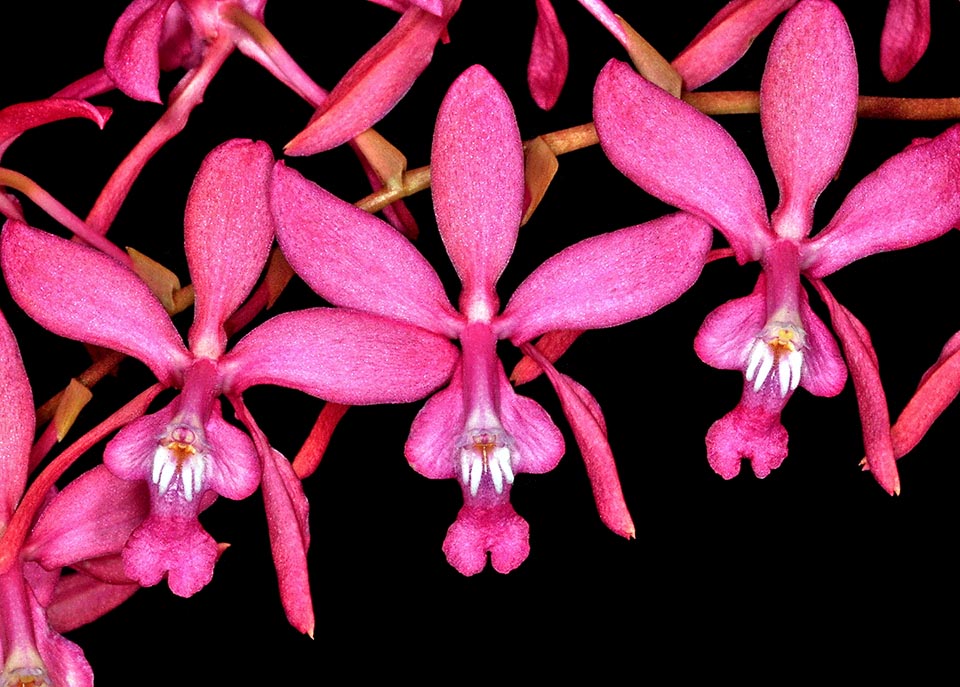
The long lasting racemose inflorescences have attracted the attention of the lovers and several horticultural forms are born © Ron Parsons
Due to the reduction of the habitats, Oncidium vulcanicum, from June 22nd, 2021, has been included for the Latin America and the Caribbean in the Appendix II of Washington Convention (CITES) that has the purpose of protecting the animal and vegetable species under risk of extinction, forbidding their trade and, particularly, their export and detention.
Oncidium vulcanicum is a lithophyte, but also a cespitose epiphyte, that may reach the height of 15-20 cm with pseudobulbs of ovoid shape, laterally compressed, 1,5-2,0 cm long and having on the apex only one leaf (10-15 x 1,5 cm) of dark green colour, slightly fleshy supported by a short petiole.
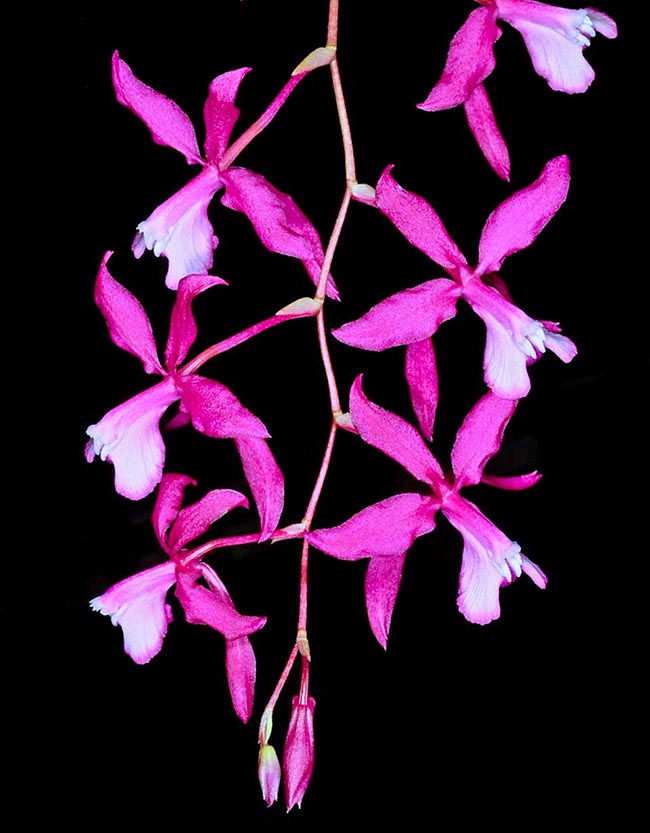
They can bear even 25-30 very decorative corollas if cultivated in hanging baskets © Ron Parsons
The inflorescence is racemose, basal, with an about 30 cm long peduncle, erect or pendulous, subtended by one leaf or by dried leaf sheaths.
Numerous (25 to 30) flowers are present, shaped like a star, tht keep open for a long time.
Usually, they are red or orange, but even pink, yellow and intense pink, and measure about 4 cm.
Flowering begins in late summer and may last till the following spring.
The pollination is done by the hummingbirds.
Oncidium vulcanicum is a very ornamental species and for its cultivation requires cool temperatures.
In the wild the average day temperature lasting all over the year is 21-23 °C, and the night one is 11-13 °C, with a day difference of 9-11 °C.
The light must be abundant (12000-25000 lux), but not direct sun, and humidity around 80%.
It may be grown in a pot with middle sized fir bark for a very good drainage and to allow the flow of air around the roots.
The substratum must be replaced every 2 years.
To appreciate the spectacular flowering,it can be placed also in a hanging basket, so that its pink coloured hanging inflorescences may produce a fascinating effect.
During their growth the plants should be fertilized every week with 1/4-1/2 the recommended dosage of orchids fertilizer.
It is good practice to irrigate them once a week and only after that the loam is dry. The quantity of water can be slightly reduced in winter, especially when they are cultivated at moderate latitudes with short and low light days.
In winter the fertilizations are to be reduced or stopped.
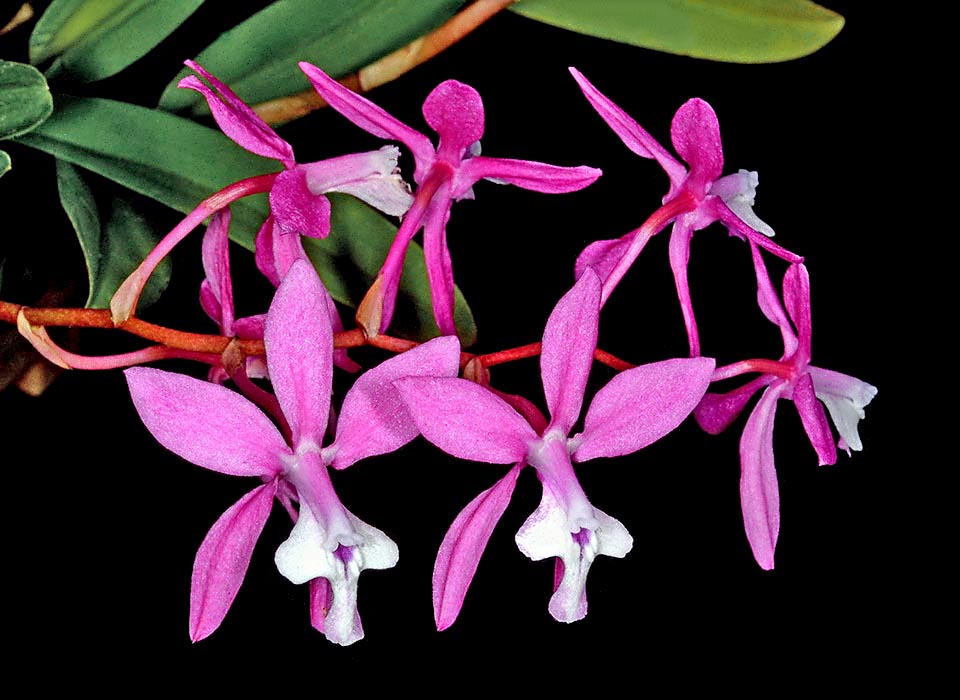
Oncidium vulcanicum ‘Yasnita’. In the wild, the average day temperature during the year is of 21-23 °C, and the night one of 11-13 °C, with a day difference of 9-11 °C © Ron Parsons
We mention, among the last years, the following awarded cultivars: Oncidium vulcanicum ‘Jasmin’ (2013); Oncidium vulcanicum ‘Klein Flottbek’ (2012); Cochlioda vulcanica ‘Eumelia’ (2005); Cochlioda vulcanica ‘Ganesh’ (2004); Cochlioda vulcanica ‘J & L’ (1973).
Synonyms: Cochlioda vulcanica (Rchb.f.) Benth. & Hook.f. ex A.H. Kent (1893); Cochlioda vulcanica (Rchb.f.) Benth. & Hook.f. ex B.D. Jacks. (1893); Cochlioda vulcanica (Rchb.f.) Benth. & Hook.f. ex Rolfe (1886); Cochlioda vulcanica (Rchb.f.) Ridl. (1886); Cochlioda vulcanica var. splendens Froebel ex Cogn. (1898); Mesospinidium vulcanicum Rchb.f. (1872); Odontoglossum vulcanicum (Rchb.f.) Dalström (2012).
